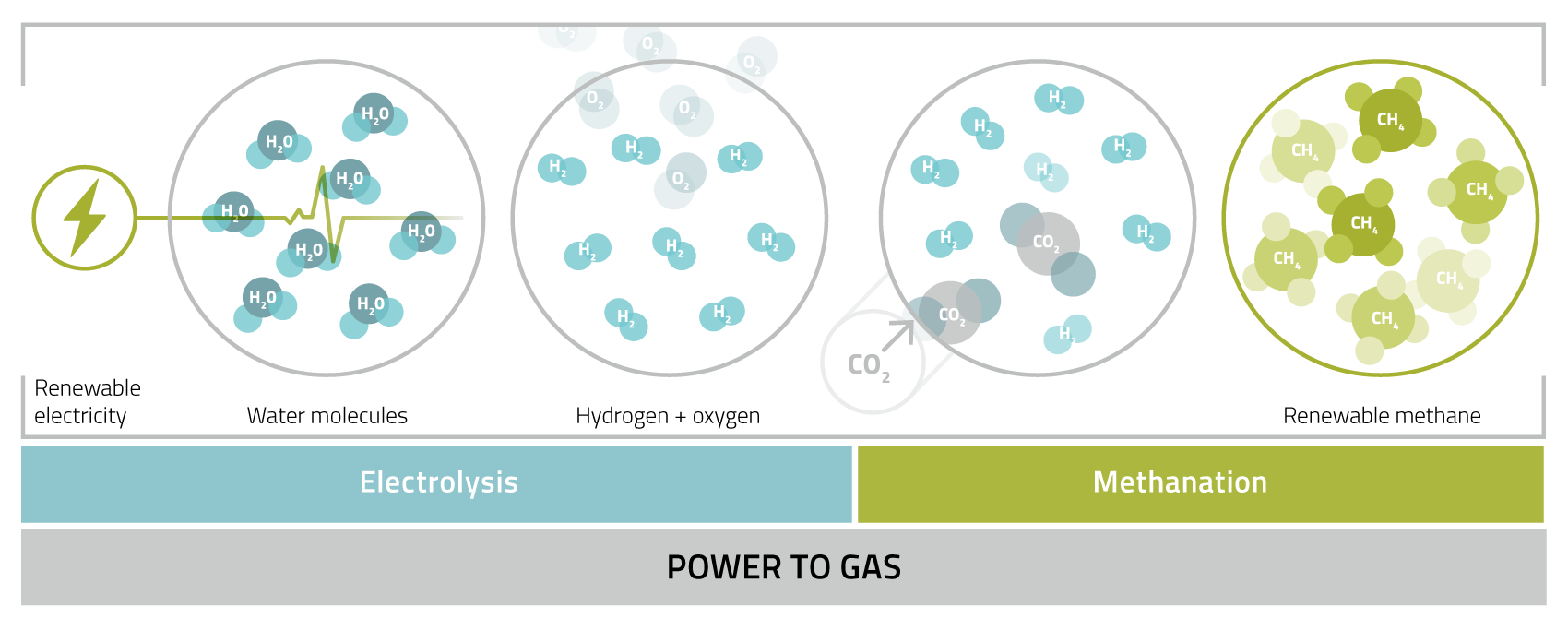RENEWABLE ELECTRICITY STORAGE
Wind, hydro and solar power plants produce different amounts of electricity depending on the weather, time of day and season. If production exceeds consumption at a certain point in time, power plants have to be taken off the grid in order to keep it stable. Valuable renewable energy is thus lost. Power-to-gas is an innovative technology used to store this excess energy. In Iceland, the conditions for power-to-gas are particularly favourable. The country has a great deal of surplus renewable electricity that it cannot export. At the same time, electricity prices are very low. This increases the cost-effectiveness of power-to-gas technology.
HOW POWER-TO-GAS WORKS
Excess renewable electricity is used to split water molecules into hydrogen and oxygen (electrolysis). In a second step, the hydrogen obtained (H2) is mixed with carbon dioxide (CO2) and thus converted to methane (CH4) (methanation).
Methanation can be catalytic or biological. Catalytic methanation is a chemical process. With the aid of a catalyst (e.g. nickel), the CO2 reacts with hydrogen at temperatures of 300 to 700°C to form methane and water. CO2 and H2 both combine with the nickel catalyst to form methane (CH4). The nickel particle then becomes free again for the next CO2 and H2 molecules.
In addition to the chemical process (catalytic), methanation can also take place biologically. The power-to-gas system relies on the help of microscopic organisms called archaea. These microorganisms occur in Iceland’s geothermal sources and convert hydrogen and CO2 into methane as part of their metabolism.
KEY TECHNOLOGY FOR SECTOR COUPLING
Methane has the same chemical composition as natural gas and is referred to as synthetic renewable gas or synthetic green gas (SGG). Synthetic renewable gas is versatile: it can be used as fuel in private households or industry, for transport or the combined generation of electricity and heat in CHP plants. Power-to-gas thus connects the sectors of electricity, heat and transport, known as sector coupling.
STORING ENERGY IN SUMMER AND CONSUMING IT IN WINTER
In a system that relies entirely on renewable energy, power-to-gas makes an important contribution to seasonal storage, as renewable electricity, which is often produced in large quantities during the summer months, can be stored in the form of gas. In winter it is then available as renewable energy. Power-to-gas is a compact storage technology. The same amount of energy in the form of gas requires about a hundred times less volume than the water in a reservoir.

